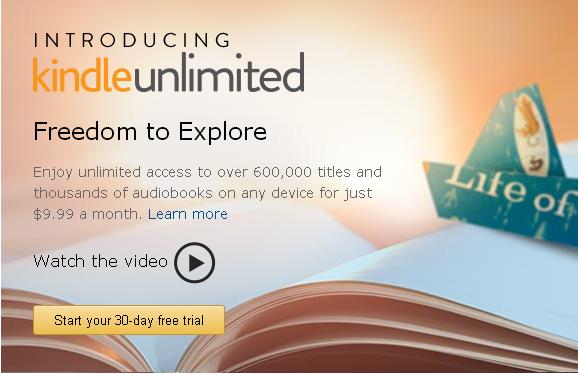4 E-book Formats Self-Published Authors Should Know About

Kindle Unlimited: Exclusivity Is Not Always Bad for Authors
Oh Amazon, Oh Hachette … Oh, Lord!
As I write this, I am preparing an e-course on how writers can self-publish their own e-books. Both fiction writers and nonfiction writers can learn to do it. Even poets can benefit from self-publishing. But this post is not about how to do it. Rather, today I want to discuss 4 popular e-book formats that you should know about before you decide you want to be a publisher.
The 4 must-know e-book formats for self-publishers are:
- PDF Books
- Kindle
- ePub
- iBooks
Let’s discuss these one by one.
PDF Books
The PDF format is the oldest of the four formats. Created by Adobe in the early 1990s, the PDF format is a fixed format that is as ubiquitous as it gets. Anyone can read a PDF book on any device, however, because it is a fixed format document, it may not be the most desirable format for some devices. It is very hard to read on small handheld devices, for instance.
PDF stands for Portable Document Format.
Publishing to the PDF format does afford you some advantages, one of which is the ability to sell your book on your own website and distribute it more widely than you can do through online bookstores alone. However, there are some disadvantages, one of which being that you can’t sell a PDF on Amazon or some of the other book stores. I would not recommend publishing your books in the PDF file format alone.
Kindle Books
The Kindle format is Amazon’s proprietary format. We can all thank Amazon for creating its Kindle e-reader. No other company is responsible for the rapid rise of e-book publishing and it’s because of Amazon that so many authors have realized a successful run at self-publishing.
The biggest benefit to publishing in the Kindle format is that you can sell your book on Amazon, the largest online book store. However, not everyone is a fan of Amazon, so you’ll never sell your book to those people if you publish only for the Kindle format.
Kindle books are readable on any device, however, if you are not reading on a Kindle, then you must first download an app in order to read Kindle books. This makes Kindle books less desirable for people who are not technologically savvy and who do not own a Kindle.
ePub Books
A healthy alternative to the Kindle format is the ePub format. Any e-reader that isn’t a Kindle is compatible with the ePub format. Even Apple’s proprietary devices can read ePub documents. Readers who own a Kindle and want to read an ePub book, however, will have to download an app for it, which is why I recommend publishing in all available formats whenever possible.
iBooks
Apple’s proprietary e-book format is called iBooks. I’ve never created an iBook, so this is the format that I am least familiar with. I am currently researching the iBook format so that I can discuss it with some level of depth in my e-course.
Just as I would not recommend publishing solely in any other format, I would not recommend that you publish only in the iBooks format. Nor would I recommend not considering it at all.
Apple readers can read ePub documents, and you might be tempted to rely on that, just as I have. But I am learning that some Apple device owners prefer to read iBooks. Therefore, it would behoove independent authors to consider learning how to format your books for the iBooks Store.
Conclusion
If you want your e-books to receive the widest possible distribution, I highly recommend publishing them in all available formats. That means you will have to learn how to format your books for each reading device on the market. You can start with the PDF, the easiest to learn, and work your way down to the iBooks format.


